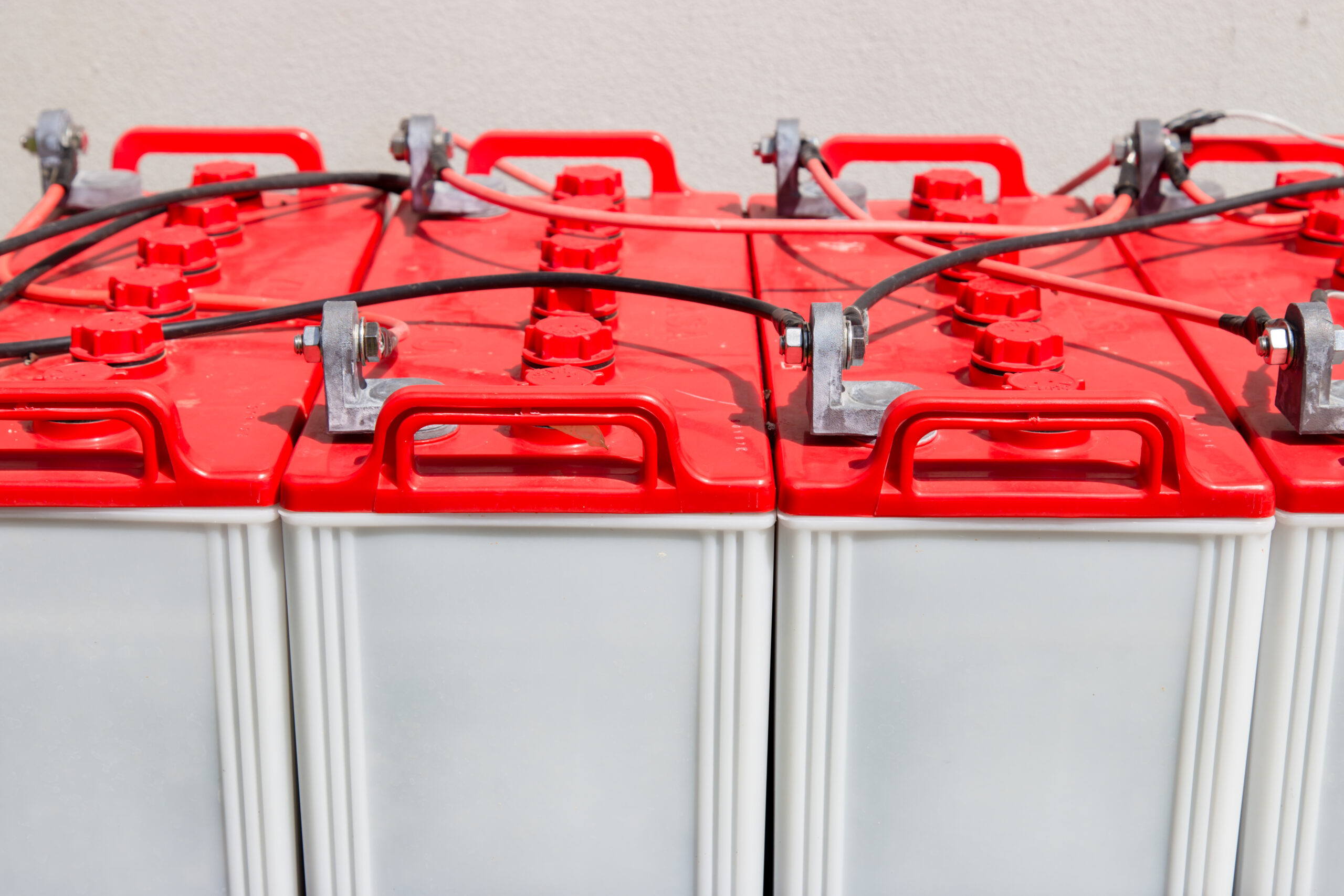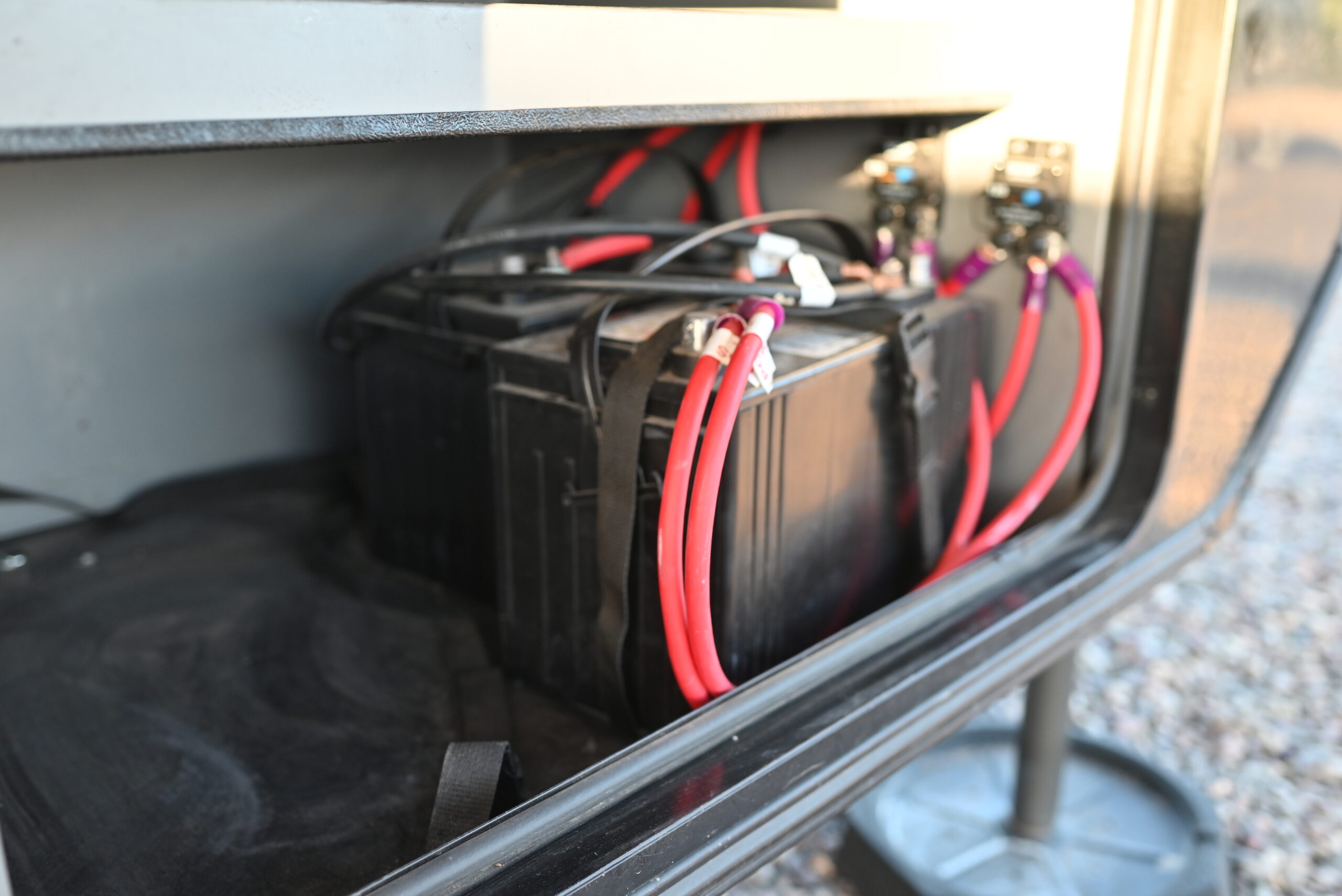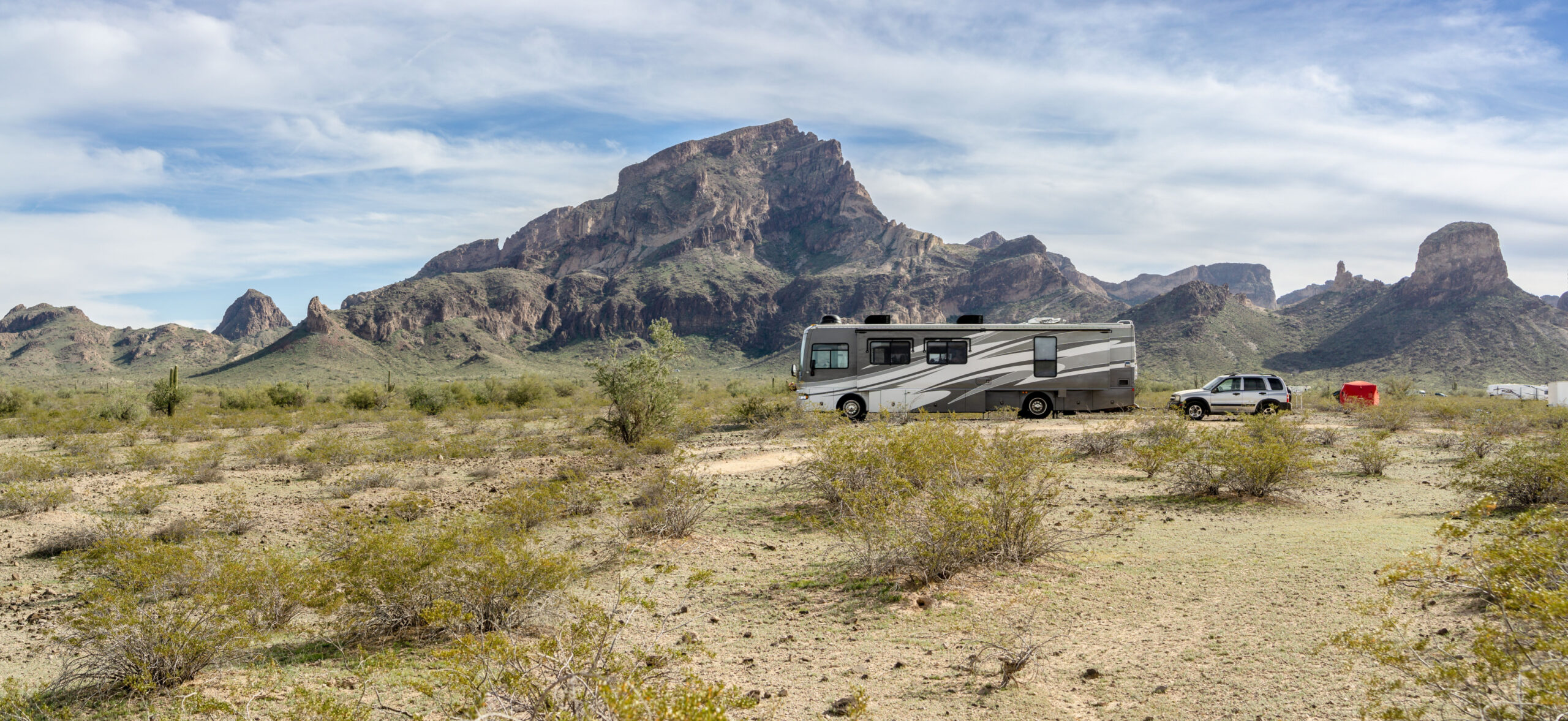
How To Prevent A Dead RV Battery
There is something special about traveling to a camping destination in an RV. Watching the sunrise while sipping your favorite hot brew of coffee is a morning ritual for most campers. But those good times will be ruined if your RV battery dies, especially if you are boondocking.
There are several reasons why RV batteries die. According to Mark Polk on GoRVing,
85% of batteries manufactured in the U.S. die prematurely, and RVers often replace batteries every year or two.
Mark Polk – GoRVing
That cost can quickly add up. Fortunately, there are tried and true ways to prevent your RV batteries from dying, and extending their lifespan from just 1 or 2 years to a much more pocket-friendly 5 to 7 years. In this article, we’ll walk you through the fundamental steps to maintaining your RV’s coach and chassis batteries correctly.
RV Battery Introduction
Chassis RV battery vs. Coach RV Battery?
A motorhome will typically have two battery systems: one that runs the engine, usually called an engine or a chassis battery, and a 12-volt battery or battery bank referred to as the coach or house batteries, for powering your RV’s appliances and electrical equipment.
Coach Batteries
A coach RV battery could be a single 12-volt battery. Coach batteries can also consist of multiple 12-volt batteries in parallel, as well as multiple 6-volt deep cycle batteries run in both series and parallel circuits. While much of this article deals with serviceable lead-acid batteries, let’s not forget that AGM and Lithium-Ion batteries are making huge inroads into the RV market. Many of the same principals here will apply.
Coach batteries, along with your RV’s power inverter, typically run your RV’s 12v and 110v appliances, TVs, audio systems, fans, and the like. Coach batteries are kept charged by external sources: either a generator, or via the electrical stalk at the campsite where you are hooked up. When your RV is connected to an electrical outlet and is using power from the electrical grid, that is called shore power. Campsites usually provide 20a, 30a, and 50-amp electrical outlets.
Regardless of which combination your RV uses, the principals of preventing a dead battery are the same. Of course, 5th wheels and travel trailers only have coach batteries, there is no engine battery on these tow-behind RVs.
Why are chassis and coach batteries separated and not linked?
RVers with motorhomes may ask, why not just have one bank of batteries for the chassis and house batteries? One answer is that if your coach batteries run out of power, you can at least start your RV and drive to a nearby electrical outlet to recharge. But if the chassis battery is drained, you could be stranded.
As we mentioned earlier, house batteries may often be deep-cycle batteries designed to give long lasting power, not quick starting power.
Can RV alternators recharge coach batteries while driving?
It is pretty rare to find a motorhome that doesn’t charge the house battery while running down the road. The better question would be, Should your alternator charge the house battery while running? Many RVers worry that if they drive their motorhomes with the house and engine batteries tied together, it will put a strain on the alternator. But you need not worry, they are built to put out power, and most modern motorhomes have a system to protect your alternators from overheating.
For example, if your coach batteries are so drained that they drag the chassis battery down while the solenoid is closed, it will open the solenoid and delay closing it again. Thus, giving the alternator a chance to only charge the chassis battery. That cycle will repeat until your house battery comes up to a state of charge that doesn’t overload the system anymore.
What causes the RV battery to die?
Leaving a light on, the refrigerator, or the TV while not using the RV are unnecessary and unintentional loads on your RV’s electrical circuit that can cause the battery to die if not managed carefully. A discharged battery – or a battery with a low charge state – can actually cause severe problems. We’ll tell you what those causes are, how they occur, and how to prevent them from happening to your RV.
Common causes of RV battery dying
Sulfation
The leading cause of dead RV batteries (and other lead-acid battery types, for that matter) is sulfation. Sulfation is a process in which sulfuric acid in the chassis battery forms on the battery’s internal plates, creating sulfur crystals that rob the battery of its energy capacity. These sulfur crystals form a barrier between the other acids and the battery’s active plate material, preventing the battery from being fully recharged.
A regularly charged battery doesn’t suffer from sulfation, at least not by much. The sulfur crystals are quickly converted into active plate material to return the battery to 100 percent energy capacity. This is because the sulfation process only begins when a chassis battery’s voltage drops below 12.5 volts. In an idle battery, the sulfur crystals cannot convert into active plate materials and it kills the battery.
Parasitic loads
Without knowing it, you may inadvertently drain and kill your RV’s chassis and coach batteries. We’ve all left our car’s headlights on at one point or another (and if you haven’t, your turn is still coming), and for RV owners they may have left the refrigerator on or some other appliance that slowly drains the coach battery. They call these parasitic loads. When the RV isn’t in use, the appliances drain the coach battery. As you’ve read about sulfation, you’ll know that sulfation sets in when the battery’s voltage drops below 12.5 volts to eventually drain and kill the battery.
Self-discharging
Even though your chassis battery and coach battery are disconnected, or your batteries are removed and stored, the battery capacity will drop by about 10 percent per month on average. Yes, sulfation does occur in this instance too. Even a stored battery needs to be regularly recharged to maintain its optimal capacity and performance.
The correct procedure to maintain your RV’s batteries is with regular driving (to charge up the chassis battery) and using shore power to charge up the coach battery. Modern RVs are equipped with converters with built-in coach battery chargers. These chargers feature a maintenance charge mode that tops up the coach battery whenever it is used. However, if you charge your coach battery without such a smart charger, you can very easily overcharge it, boil the acids inside, and kill the battery.
Undercharging/Overcharging
As if that wasn’t a worry in itself, undercharging a battery will lead to sulfation as well. If you don’t recharge your chassis and coach batteries fully, sulfation will set in and cause your batteries to die.
A lack of maintenance on the chassis and coach batteries will lead to your RV’s batteries needing to be replaced once a year or every 2 years. Simply checking on your RV’s batteries once or twice a month will prolong their lifespans to 5 to 7 years. If you start up your RV to drive it once or twice a month, it will charge the chassis battery fully to maintain its optimal charge state and decrease the risk of sulfation and self-discharge causing the battery to die.
How to prevent RV batteries from dying
Prevention is always better than cure, the old saying goes. In the case of an RV battery, it’s entirely true. The chassis battery is perhaps the easiest of the two batteries to maintain. Avoiding sulfation, the scourge of lead-acid batteries, prevents damage over time. Routine battery maintenance that includes checking the battery’s water level and topping up with distilled water if it is lower than the recommended manufacturer specifications will prolong the battery’s life by several years. Recharging the battery before it is low or dead is the best practice. The best advice we can offer, from personal experience, is to make use of a battery maintainer and conditioner. This device will keep your chassis and coach batteries in optimal condition, even if you only use your RV once a year.
The coach battery requires careful maintenance and regular monitoring, especially if your RV doesn’t have any battery disconnect switches to prevent parasitic loads. As we’ve mentioned before, even if your RV is stored between camping trips and there are no parasitic loads, you will still need to recharge the coach’s battery because it does self-discharge. The battery maintainer and conditioner will be able to optimize the battery to keep it healthy and charged. When you connect your RV to an electrical outlet, you should use a surge protector to prevent power spikes from damaging the battery.
Solar power
Solar panels with solar controllers and charging circuits are a great way to supplement more traditional hardware. Solar is a massive topic in of itself. You can find related articles here.
What to do when the RV battery dies?
The first thing to do when your RV’s battery dies is to ascertain if both the coach and chassis batteries are dead or just one of them. It must be said that batteries do die, and with preventative and maintenance care you will be able to lessen the consequences.
Flipping that Aux Start switch
If your chassis battery goes dead or weak for some reason, the AUX switch in most motorhomes will temporarily tie in your house battery to start the engine. While it is a straightforward push-the-button solution, different RVs might require additional steps to start your RV properly.
For example, some motorhomes will expect you to press and hold the Aux button while turning the key to start the engine. Once the engine has started, you must release the Aux button. Some other manufacturers will advise you to turn your generator on first before using this button. Therefore, it will be wise to consult your owner manuals before using them.
Using a jump starter
When it rains, it pours. There will be a time when both of your RV batteries die. That does happen, unfortunately. And when it happens as you’re stranded, you can jump-start the chassis battery with a portable jump starter. Thus, allowing you to get back to the road while also letting the engine’s alternator recharge the battery fully.
If you’re near an electrical outlet and your coach battery is dead, you can simply connect to shore power to recharge the battery fully. If you’re not anywhere near an electrical outlet, you can use your jump box to juice up your coach battery, too. Your RV’s built-in generator will also help in such a situation.
Look for replacement
What you should never forget is that batteries can be dangerous to handle. A dead battery, or an overcharged battery, can leak acids and even explode. If you’re unsure of the condition and safety of your battery, rather seek the advice of a battery specialist and have your battery replaced.
Always use gloves and protective eyewear when handling a battery, too. If you’ve replaced your dead battery, you can start afresh with proper maintenance protocols as we’ve outlined.
Conclusion
Batteries, in essence, are bubbling chemicals. No matter how well we maintain them, they have a limited life span. Their components and chemicals degrade over time, despite your strictest maintenance and care measures. Your RV battery dying may be impossible to prevent or avoid entirely. Routine maintenance will, however, minimize these consequences.
Make sure you keep track of all your RV maintenance and repairs with an online tool such as RV LIFE Maintenance. Not only can you keep all of your documents in one place, but you’ll also receive timely reminders when maintenance is due to help you avoid costly repairs and potentially serious accidents.
Tim Miller is an automotive mechanic and blogger from Denver, Colorado. He has over 20 years in the field and created batterytrend.com, a blog about battery and battery-related products.



